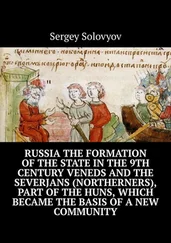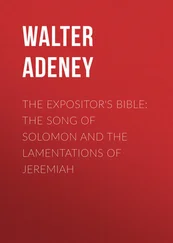Charles Addison - The History of the Knights Templars, the Temple Church, and the Temple
Здесь есть возможность читать онлайн «Charles Addison - The History of the Knights Templars, the Temple Church, and the Temple» — ознакомительный отрывок электронной книги совершенно бесплатно, а после прочтения отрывка купить полную версию. В некоторых случаях можно слушать аудио, скачать через торрент в формате fb2 и присутствует краткое содержание. Жанр: foreign_antique, foreign_prose, на английском языке. Описание произведения, (предисловие) а так же отзывы посетителей доступны на портале библиотеки ЛибКат.
- Название:The History of the Knights Templars, the Temple Church, and the Temple
- Автор:
- Жанр:
- Год:неизвестен
- ISBN:нет данных
- Рейтинг книги:5 / 5. Голосов: 1
-
Избранное:Добавить в избранное
- Отзывы:
-
Ваша оценка:
- 100
- 1
- 2
- 3
- 4
- 5
The History of the Knights Templars, the Temple Church, and the Temple: краткое содержание, описание и аннотация
Предлагаем к чтению аннотацию, описание, краткое содержание или предисловие (зависит от того, что написал сам автор книги «The History of the Knights Templars, the Temple Church, and the Temple»). Если вы не нашли необходимую информацию о книге — напишите в комментариях, мы постараемся отыскать её.
The History of the Knights Templars, the Temple Church, and the Temple — читать онлайн ознакомительный отрывок
Ниже представлен текст книги, разбитый по страницам. Система сохранения места последней прочитанной страницы, позволяет с удобством читать онлайн бесплатно книгу «The History of the Knights Templars, the Temple Church, and the Temple», без необходимости каждый раз заново искать на чём Вы остановились. Поставьте закладку, и сможете в любой момент перейти на страницу, на которой закончили чтение.
Интервал:
Закладка:
Mr. Willement has also drawn my attention to a very distinct impression of the reverse of the seal of the Temple described in page 106, whereon I read very plainly the interesting motto, “TESTIS SVM AGNI.”
CHAPTER I
Origin of the Templars – The pilgrimages to Jerusalem – The dangers to which pilgrims were exposed – The formation of the brotherhood of the poor fellow-soldiers of Jesus Christ to protect them – Their location in the Temple – A description of the Temple – Origin of the name Templars – Hugh de Payens chosen Master of the Temple – Is sent to Europe by King Baldwin – Is introduced to the Pope – The assembling of the Council of Troyes – The formation of a rule for the government of the Templars.
“Yet ’midst her towering fanes in ruin laid,
The pilgrim saint his murmuring vespers paid;
’Twas his to mount the tufted rocks, and rove
The chequer’d twilight of the olive-grove:
’Twas his to bend beneath the sacred gloom,
And wear with many a kiss Messiah’s tomb.”
The extraordinary and romantic institution of the Knights Templars, those military friars who so strangely blended the character of the monk with that of the soldier, took its origin in the following manner: —
On the miraculous discovery of the Holy sepulchre by the Empress Helena, the mother of Constantine, about 298 years after the death of Christ, and the consequent erection, by command of the first christian emperor, of the magnificent church of the Resurrection, or, as it is now called, the Church of the Holy Sepulchre, over the sacred monument, the tide of pilgrimage set in towards Jerusalem, and went on increasing in strength as Christianity gradually spread throughout Europe. On the surrender of the Holy City to the victorious Arabians, (A. D. 637,) the privileges and the security of the christian population were provided for in the following guarantee, given under the hand and seal of the Caliph Omar to Sophronius the Patriarch.
“From Omar Ebno ’l Alchitab to the inhabitants of Ælia.”
“They shall be protected and secured both in their lives and fortunes, and their churches shall neither be pulled down nor made use of by any but themselves.” 1 1 Elmacin, Hist. Saracen. Eutychius.
Under the government of the Arabians, the pilgrimages continued steadily to increase; the old and the young, women and children, flocked in crowds to Jerusalem, and in the year 1064 the Holy Sepulchre was visited by an enthusiastic band of seven thousand pilgrims, headed by the Archbishop of Mentz and the Bishops of Utrecht, Bamberg, and Ratisbon. 2 2 Ingulphus, the secretary of William the Conqueror, one of the number, states that he sallied forth from Normandy with thirty companions, all stout and well-appointed horsemen, and that they returned twenty miserable palmers, with the staff in their hand and the wallet at their back. — Baronius ad ann. 1064 , No. 43, 56.
The year following, however, Jerusalem was conquered by the wild Turcomans. Three thousand of the citizens were indiscriminately massacred, and the hereditary command over the Holy City and territory was confided to the Emir Ortok, the chief of a savage pastoral tribe.
Under the iron yoke of these fierce Northern strangers, the Christians were fearfully oppressed; they were driven from their churches; divine worship was ridiculed and interrupted; and the patriarch of the Holy City was dragged by the hair of his head over the sacred pavement of the church of the Resurrection, and cast into a dungeon, to extort a ransom from the sympathy of his flock. The pilgrims who, through innumerable perils, had reached the gates of the Holy City, were plundered, imprisoned, and frequently massacred; an aureus , or piece of gold, was exacted as the price of admission to the holy sepulchre, and many, unable to pay the tax, were driven by the swords of the Turcomans from the very threshold of the object of all their hopes, the bourne of their long pilgrimage, and were compelled to retrace their weary steps in sorrow and anguish to their distant homes. 3 3 Will. Tyr. , lib. i. cap. 10, ed. 1564.
The melancholy intelligence of the profanation of the holy places, and of the oppression and cruelty of the Turcomans, aroused the religious chivalry of Christendom; “a nerve was touched of exquisite feeling, and the sensation vibrated to the heart of Europe.”
Then arose the wild enthusiasm of the crusades; men of all ranks, and even monks and priests, animated by the exhortations of the pope and the preachings of Peter the Hermit, flew to arms, and enthusiastically undertook “the pious and glorious enterprize” of rescuing the holy sepulchre of Christ from the foul abominations of the heathen.
When intelligence of the capture of Jerusalem by the Crusaders (A. D. 1099) had been conveyed to Europe, the zeal of pilgrimage blazed forth with increased fierceness; it had gathered intensity from the interval of its suppression by the wild Turcomans, and promiscuous crowds of both sexes, old men and children, virgins and matrons, thinking the road then open and the journey practicable, successively pressed forwards towards the Holy City, with the passionate desire of contemplating the original monuments of the Redemption. 4 4 Omnibus mundi partibus divites et pauperes, juvenes et virgines, senes cum junioribus, loca sancta visitaturi Hierosolymam pergerent. – Jac. de Vitriaco. Hist. Hierosol. cap. lxv.
The infidels had indeed been driven out of Jerusalem, but not out of Palestine. The lofty mountains bordering the sea-coast were infested by bold and warlike bands of fugitive Mussulmen, who maintained themselves in various impregnable castles and strongholds, from whence they issued forth upon the high-roads, cut off the communication between Jerusalem and the sea-ports, and revenged themselves for the loss of their habitations and property by the indiscriminate pillage of all travellers. The Bedouin horsemen, moreover, making rapid incursions from beyond the Jordan, frequently kept up a desultory and irregular warfare in the plains; and the pilgrims, consequently, whether they approached the Holy City by land or by sea, were alike exposed to almost daily hostility, to plunder, and to death.
To alleviate the dangers and distresses to which these pious enthusiasts were exposed, to guard the honour of the saintly virgins and matrons, 5 5 “To kiss the holy monuments,” says William of Tyre, “came sacred and chaste widows, forgetful of feminine fear, and the multiplicity of dangers that beset their path.” – Lib. xviii. cap. 5.
and to protect the gray hairs of the venerable palmer, nine noble knights formed a holy brotherhood in arms, and entered into a solemn compact to aid one another in clearing the highways of infidels, and of robbers, and in protecting the pilgrims through the passes and defiles of the mountains to the Holy City. Warmed with the religious and military fervour of the day, and animated by the sacredness of the cause to which they had devoted their swords, they called themselves the Poor Fellow-soldiers of Jesus Christ . They renounced the world and its pleasures, and in the holy church of the Resurrection, in the presence of the patriarch of Jerusalem, they embraced vows of perpetual chastity, obedience, and poverty, after the manner of monks. 6 6 Quidam autem Deo amabiles et devoti milites, charitate ferventes, mundo renuntiantes, et Christi se servitio mancipantes in manu Patriarchæ Hierosolymitani professione et voto solemni sese astrinxerunt, ut a prædictis latronibus, et viris sanguinum, defenderent peregrinos, et stratas publicas custodirent, more canonicorum regularium in obedientia et castitate et sine proprio militaturi summo regi. Jac. de Vitr. Hist. Hierosol. apud Gesta Dei per Francos , cap. lxv. p. 1083. — Will. Tyr. lib. xii. cap. 7. There were three kinds of poverty. The first and strictest ( altissima ) admitted not of the possession of any description of property whatever. The second ( media ) forbade the possession of individual property, but sanctioned any amount of wealth when shared by a fraternity in common. The lowest was where a separate property in some few things was allowed, such as food and clothing, whilst everything else was shared in common. The second kind of poverty (media) was adopted by the Templars.
Uniting in themselves the two most popular qualities of the age, devotion and valour, and exercising them in the most popular of all enterprises, the protection of the pilgrims and of the road to the holy sepulchre, they speedily acquired a vast reputation and a splendid renown.
Интервал:
Закладка:
Похожие книги на «The History of the Knights Templars, the Temple Church, and the Temple»
Представляем Вашему вниманию похожие книги на «The History of the Knights Templars, the Temple Church, and the Temple» списком для выбора. Мы отобрали схожую по названию и смыслу литературу в надежде предоставить читателям больше вариантов отыскать новые, интересные, ещё непрочитанные произведения.
Обсуждение, отзывы о книге «The History of the Knights Templars, the Temple Church, and the Temple» и просто собственные мнения читателей. Оставьте ваши комментарии, напишите, что Вы думаете о произведении, его смысле или главных героях. Укажите что конкретно понравилось, а что нет, и почему Вы так считаете.












